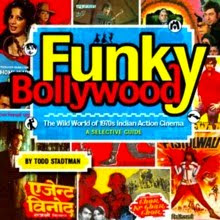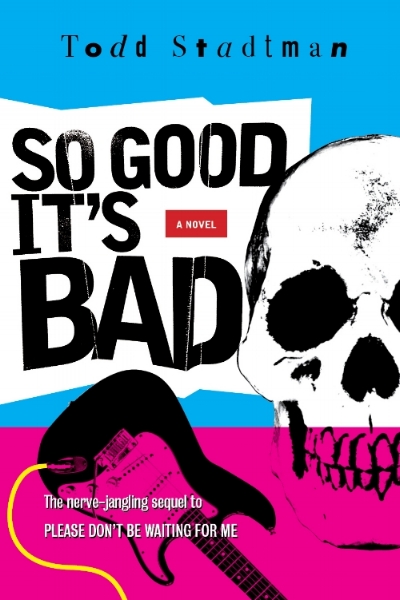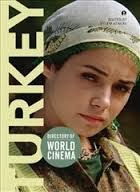It’s a wonder that any innovation at all takes place within the monster film genre, seeing as there is always a new generation of young viewers for whom all the old creatures can be trotted out and run through their familiar paces. And this is no truer for the United States than it is for Cambodia, where the horror thriller Nieng Arp became a surprise hit in 2004, running in theaters for a solid three months.
Nieng Arp concerns the folkloric beastie known to Cambodians as the Arp (or Ap), which will be familiar to 4DK readers as the Krasue from Thailand’s Ghost of Guts Eater, the “Flying Evil” from Taiwan’s Witch With Flying Head, and the Leak from Indonesia’s Mystics in Bali. If you are too lazy to click those links, you will be none the wiser—unless, of course, you are unable to click them because you are a levitating, disembodied head with all of your entrails dangling out of your neck hole, in which case you know what an Arp is, because you are one. Nieng Arp’s subtitles further put a bow on things by translating “Arp” somewhat awkwardly as “Bodiless Vampire.”
Our story gets under way when village girl Maya and her boyfriend are attacked by a trio of randy local hooligans as they walk through the forest at night. The boyfriend is killed and Maya is raped and left for dead. It is at this moment that an Arp just happens to fly by and “turns” Maya by dribbling some kind of goop inter her mouth from hers. Next, a subtitle appears telling us that 16 years have passed, and the fact that this is a horror movie made in the 2000’s is announced by the arrival of a vanload of boisterous college students from Pnom Penh, who are in the Battambang Province for a study tour of the area’s shrines.
 This group is as lazily drawn as precedent would have you expect (the Fat Girl is pushy, constantly eats, and gets diarrhea—and there’s a gay guy named “Pompy”), but it has to be said that the purpose of their visit provides the film with most of its visual highlights.
The lush, antiquity-strewn locations through which the group tours are indeed beautiful, even if they provide the impetus for some frankly enervating travelogue sequences. First-timer Kam Chanty proves himself to be yet another novice director who can’t resist the allure of a good stairway. Thus do we watch in real time as our little group fully ascends a steep hillside to the accompaniment of light pop rock.
This group is as lazily drawn as precedent would have you expect (the Fat Girl is pushy, constantly eats, and gets diarrhea—and there’s a gay guy named “Pompy”), but it has to be said that the purpose of their visit provides the film with most of its visual highlights.
The lush, antiquity-strewn locations through which the group tours are indeed beautiful, even if they provide the impetus for some frankly enervating travelogue sequences. First-timer Kam Chanty proves himself to be yet another novice director who can’t resist the allure of a good stairway. Thus do we watch in real time as our little group fully ascends a steep hillside to the accompaniment of light pop rock.When it comes time for the gang to seek out their accommodations, we come to a hostel overseen by none other than Maya, played by an actress whose likeness to Suzzanna cannot be mere coincidence. Maya shares the home with Paulika, her teenage daughter. Paulika is, by all appearances, a normal teenage girl, to the extent that one might suspect she is the victim of some kind of Marilyn Munster syndrome. Mom, meanwhile, keeps her head’s tendency to go airborne on the down low—until, that is, Satha (Sovan Makara), the hunk of the visiting group, starts to woo Paulika. In a turn of events that is almost Bollywood-like in its providence, Maya somehow divines that Satha is the descendant of one of her rapists--at which point no amount of pleading from Paulika, nor solemn intervention by the village monks, can stop her.
When it comes to reviewing Nieng Arp, I find myself with a bit of a dilemma on my hands. That is because I have a strong suspicion that, in the process of transferring the film to the VCD on which I watched it, a couple of the reels were placed out of sequence. Certain scenes on the second disc are clearly from earlier in the film, and set up events that have already taken place—with, at the time, mysterious causation. These might be intended as flashbacks, or some kind of Tarantino-esque experiment with fragmented narrative, but, if so, they are poorly realized. Then again, it could all be just an accident beyond the filmmakers’ control (in which case, they can register a complaint via the phone number that helpfully scrolls across the bottom of the screen virtually the whole fucking time). Who am I to judge?
What I will say is this: With its homemade, shot-on-video feel, crude special effects, and religious conservatism, Nieng Arp reminds me of nothing so much as one of those evangelical horror films made in Nigeria or Ghanna. You can gauge your likely reaction to it by just how much more of B14 or 666: Beware the End is at Hand you could watch than their trailers. Nieng Arp, of course, might have the benefit of making a little more narrative sense than those movies, were it the case that the time-shifting in it that I witnessed was unintentional.
Anyway, after a good bit of Maya chasing the terrified students through the forest and slapping the back of their heads with her intestines, she calls out to the ghost of the Arp who made her for aid. This cackling crone proceeds to inhabit the bodies of the kids one by one and make them murder one another. Among her victims is a girl named Prathana, who betrays a pre-existing evil streak by wearing a bootleg tee-shirt that says “MIGKEY MOOSE” on it.
The VCD of Nieng Arp wraps up with a blooper reel of the cast muffing their lines and breaking character to much hilarity. It’s charming, to be sure, but to my mind unnecessary to providing the film with a happy ending. I’ve elsewhere dedicated no small amount of text to grieving the tragic end that befell Cambodia’s cinematic golden age of the 60s and 70s. After the ravages of Pol Pot (whose name is evoked in Nieng Arp as yet another shiver-inducing bogey man), the revival of that cinema was fitful and protracted, with a few bright spots amid long periods of dormancy. One of the brightest of those spots was the success of Nieng Arp, which, along with a number of other low budget horror features, prompted an uptick in film production and theater attendance in the country. All in all, it’s a heartening example of how exploitation cinema, with all its commerce-driven perseverance, can sometimes tow a nation’s entire film industry behind it into safer waters.






























































No comments:
Post a Comment